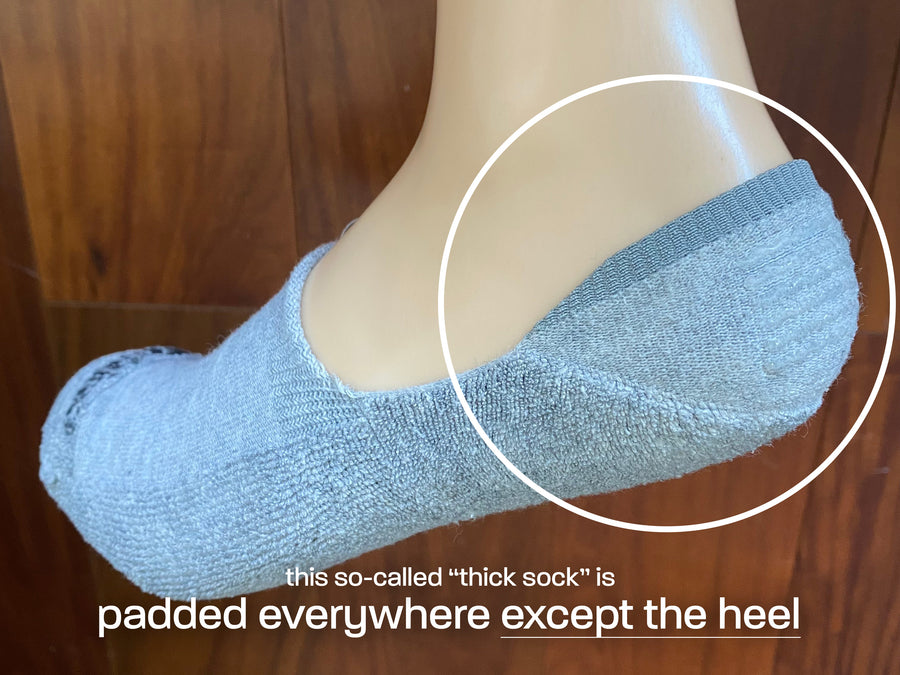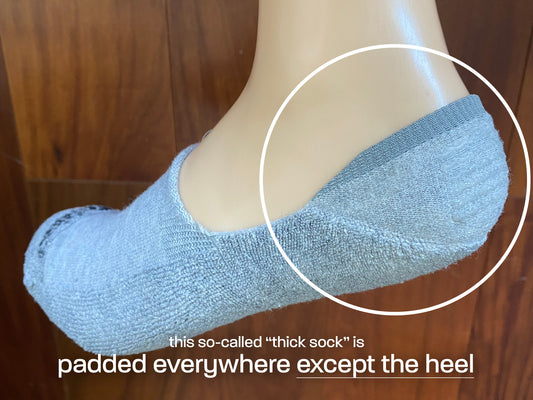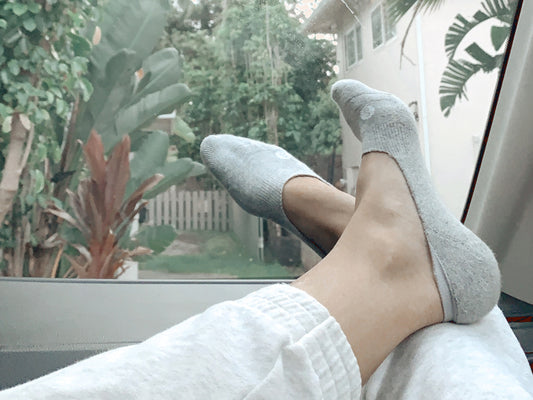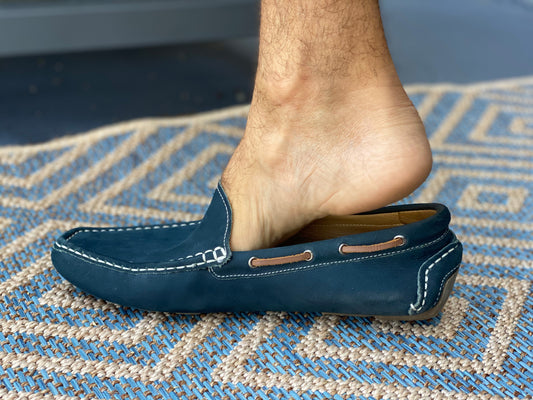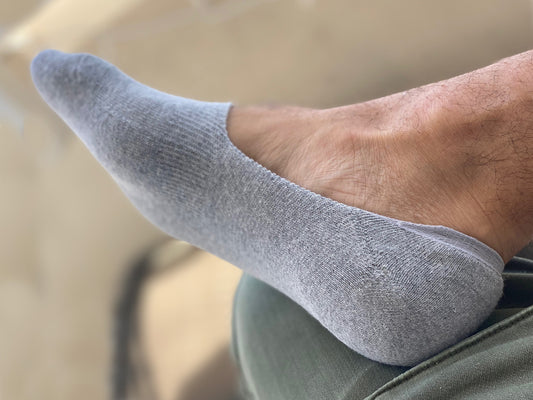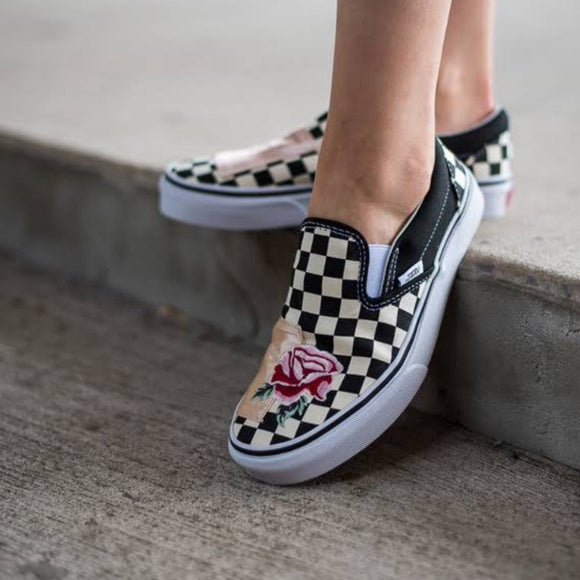
Whether you're a skater or just "doing fashion" 🙌 , Vans have been a wardrobe staple for a while.
But for a sneaker that's supposed to be super comfortable, it's crazy that everyone says you need to "break them in".
Bad advice: "Breaking in Vans" actually means "breaking in your feet" 🤢 to build up callouses where they uncomfortably rub.
Getting to the point of callouses means rubbing your heel and ankle skin (especially in the achilles tendon area) so much that blisters form. And then you still sometimes don't get relief after the blisters heal.
Yes, it maybe works for some people (who? we don't know), but for occasional wearers or those of us who can't get the callous idea to work, we need another solution.
First: Why are my heels rubbing in Vans?

Heel rubbing occurs because Vans come in "standard" sizes for "typical" foot shapes.
But many people have foot shapes that are just different enough that it causes a foot-shoe mismatch.
The most common mismatch that causes ankle/heel rubbing is when the wearer's feet or heels are narrow.
When heels are either narrower than most, or else they're joined with feet whose toe boxes are wider than usual (creating more of a triangle shape in the foot), they simply can't make good pressured contact with the heel collar and counter.
The result: an air gap between the skin of the heel and the canvas (or other material) in the heel of the shoe. This gap can prevent your heel from securely pressing into the shoe, leading to rubbing, blistering, slipping, and ultimately your heel even popping out of your shoe.
If you find that your heel can't quite stay in place when the rest of your shoe fits properly, this is likely your issue.
As a note, heel rubbing is more common with Vans slip-on shoes, but it can happen in the laced styles as well.
How do I wear Vans without painful heel rubbing or blisters?
You've got options:
- (Try to) break in the Vans... possibly with petroleum jelly (Vaseline)
- BUT: If you can get this to work, you'll have to endure a cycle of blisters and callouses, and it doesn't even work for many people
- Utilize adhesive heel pads on the inside back wall of the shoe
- BUT: These keep the friction against your skin! And they tend to focus more on the lower back wall of the heel counter, leaving the top "collar area" of the shoe's heel "counter" to rub against your achilles tendon.
- Use insoles
- BUT: These tend to push your foot up into the "upper" but don't change the heel geometry that you need help with. They can even make it worse by pushing your heel too high for the "shoe collar" to grip above your heel.
- Slip on conventional thin socks (crew or no-show)
- BUT: These are usually either paper-thin (not giving your heels the padding they need)... or if you're going for the sockless look, most no-show are cut way too high to remain hidden
- Wear Skinnys padded-heel socks
- Available in both invisible and tube crew styles.
- TL;DR: They're 10x better than anything else you can use to prevent rubbing blisters while wearing your Vans.
- Extra-thick Skinnys were designed specifically to help Vans wearers who blister.
Why are Skinnys the best way to stop heel-rubbing in Vans?

Skinnys are custom-designed to make your unique feet fit by eliminating the heel–air gap in Vans. It's that simple.
They use targeted heel-wall padding that's specially engineered to fill up and cushion the air gap, so your feet fit in your Vans without rubbing, blistering, or pain.
There are two styles of Skinnys to wear with Vans:
- Skinnys Invisibles: hidden for a sockless look
- or Skinnys Tubes: a stylish ribbed mid-calf look
An "obvious" fix that we waited years for someone to invent before we did it ourselves.
Ready to try a few pairs?

-
Specially engineered 2x-thick heel cups and heel counters, padded with terry cloth
* (2x thickness compared to other no-show socks) -
GripWrap™ 2x-poured silicone grip that wraps all the way around the heel counter to ensure a snug fit even on the sides of the heel
* (compared to other brands that only use a thin layer directly behind the heel, with nothing on the sides) - Super-low cut to stay hidden in most slip-on walking shoes.
- Available for women and men in various sizes
Beware: All "padded socks" are not the same
Other liners marketed as "thick" or "padded" are most often unpadded in the heel counters with little silicone to grip.
Read our blog post to see why... and how to find out if socks are actually thick in the heel!
Time to try Skinnys?
We'd love to have you try our Skinnys Weekender Pack (including both invisible liner-cut and crew tube styles)! We think they'll work for you, because they worked for us. And because 25% of our business is repeat customers, we're pretty sure they're becoming the best new tool in the arsenal to tighten people's step.
If you have any questions, please contact us. We're quick to respond, and we love talking to customers!
Photo illustrating heel blisters is licensed using the Creative Commons 2.0 license from Gunnar Aastrand Grimnes via Flickr.

